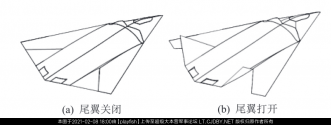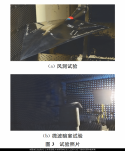You are using an out of date browser. It may not display this or other websites correctly.
You should upgrade or use an alternative browser.
You should upgrade or use an alternative browser.
Chinese UAV/UCAV development
- Thread starter AssassinsMace
- Start date
- Status
- Not open for further replies.
An aerodynamic analysis of control surfaces for a certain UCAV. The outline looks like the GJ-11 Sharp Sword.


Yes, but the wings look different!
by78
General
Yes, but the wings look different!
CASC CH-7 or CASIC Tianying maybe?
Already posted by by78 a few posts back.Interesting UAV design.
I recall a while ago we saw a similar paper with an upgrade J-20 that could also do this with its tail (plus retractable canard). Looks like this concept is being investigated more seriously.
View attachment 68643
View attachment 68642
CASC CH-7 or CASIC Tianying maybe?
I suspect there have been (and going forwards there will be) many, many, many variations of flying-wing-uav/ucav planforms that they have studied, some of which may result in flying airframes, some of which may not.
I wouldn't necessarily connect these studies with any current aircraft that we know of unless it is explicitly stated or there is some barn-door level of unique similarity, because "generic flying wing uav" is going to be a very common configuration going forwards.
What's interesting with combined sensor nodes behind Chinese attempts at fighting adversary VLO is the inherent capability of small, low RCS stealth UAVs in building enough resolution on adversary VLO for CEC to engage. Somewhere between the J-20 and the AWACS will probably be a lot of J-16s and J-10s. Adversary will attempt to do the same to erode the line though. Small stealthy UAVs can get much closer to F-22/F-35s than a J-20 could.
Wasn't there a leaked paper and hints from CAS or someone working somewhere else that they've developed a networked solution which is totally effective against stealth platforms but relatively complex and delicate since it relies on dozens of sensory nodes to fuse target information.
"Totally effective," is doubtful.
But yes, going forwards, networked and distributed sensor/shooter platforms including a large number of attritible+distributed UCAVs will likely end up being one of the adaptations in which air forces (with the requisite technology and industry base) will respond to stealth aircraft.
The idea is that UCAVs ultimately are less valuable than a manned fighter (stealth or not), and they are able to operate more riskier than your manned aircraft, by operating more forwards of your manned fighters, by actively emitting more often and more intensely to look for the enemy, both of which will hopefully offer better situational awareness and better first look-first shoot options, than a formation of manned fighters alone which would have less freedom to operate as aggressively in terms of positioning and emissions.
The fact that the UCAVs would be more distributed in offering additional sensor capacity and weapons magazines, all being semi-autonomous and where the tactical decision making is enabled by line of sight datalinks via manned fighters operating "behind the frontlines," means your manned fighter + UCAV formation should have categorically superior sensor/SA, positioning and weapons options than an opfor formation if it is made up of only manned fighters. Not to mention your force being more attritible.
It depend a lot of what it will mimic... If it mimic a stealth supersonic jet... the cost could be impressive ! In the US they talk about 10 million each for the Sierra technical service 5GAT...How much would a low cost target drone cost?
Hard to determine the price for the Chinse LJ-1 target drone, someone have an idea ?
I was thinking about this. Stealth jet should be easier to mimic because of the reduced RCS. It should be easier to design a missile that have similar RCS profile. Then in the event of war, you send in a bunch of those decoy ahead of the planes to deplete your enemy's air defense. Would it be difficult to differentiate a stealth aircraft from a small missile?It depend a lot of what it will mimic... If it mimic a stealth supersonic jet... the cost could be impressive ! In the US they talk about 10 million each for the Sierra technical service 5GAT...
- Status
- Not open for further replies.


